Search
CLOSEMaterials Synthesis, Growth & Processing
Chemical laboratories
Typical chemistry lab infrastructure, includes:
- 7 fume hoods
- 3 vacuum or high-vacuum lines with oil and diffusion pumps plus glass blowing capability
- rotary vacuum evaporators
- drying ovens and vacuum oven with controlled environment
- ultrasonicators (bath and tip)
- centrifuges
- high-temperature furnaces for melting and annealing, etc
All of the above is suitable for the design and synthesis of special materials for technological applications:
(a) Carbon nanostructures and two-dimensional nanomaterials
(b) Macromolecular materials and nanostructures
(c) Low dimensional hybrid organic-inorganic compounds
(d) Nanostructured amorphous materials with advanced functionality; high-temperature synthesis of inorganic compounds (glasses, metal oxides, ceramics)
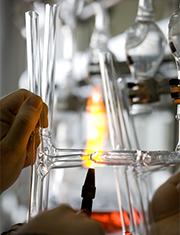
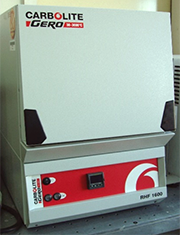
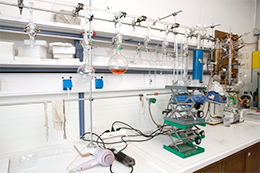
Additional independent synthesis/preparation platforms
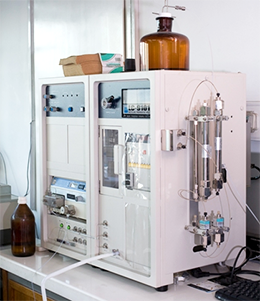
Recycling High Performance Liquid Chromatography (HPLC) system, by JAI, LC-9101.
Comprises 5 different columns (5PYE, ByckyPrep, ByckyPrep-M, 5PBB, RPFULL) allowing separation of: fullerenes according to their size, fullerenes from metallofullerenes, structural isomer materials and fullerene derivatives.
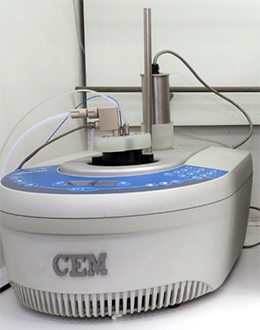
Microwave synthesis platform, by CEM DISCOVER, Labmate (Manual Single Mode Microwave System).
Equipped with an IR temperature monitoring system and a cooling air pump for efficient reaction cooling, allowing material synthesis at temperatures up to 300°C and pressures up to 21 bar.
It can be used with appropriate reaction vessels of volumetric capacity 10 ml and 80ml, but is also suitable for “open-vessel” conditions when fitted with an appropriate condenser.
The reaction system is fully controlled via a PC and appropriate software.
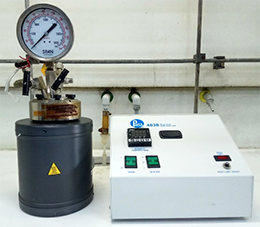
Autoclave reactor, by PARR Instruments, Model 4767.
General purpose autoclave reactor, with cylinder stainless steel vessel. Temperature monitoring from the controller via a thermocouple.
Equipped with pressure gauge for pressure monitoring. Max. temperature 350°C. Max pressure 3000 psi (200 bar) at standard temp., 2000 psi (137 bar) at high temp
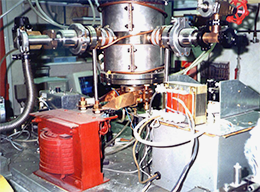
Crystal growth facility (Bridgman-Stockbarger).
Home-built device allowing mono-crystals of wide band gap dielectric crystals to be grown, with the Bridgman-Stockbarger method, from liquid melts after pulling of the seed crystal at temperatures as high as 1500°C. Mono-crystals with dimensions 5 x 0.5 cm have been grown with this device.
Good quality wide band gap fluoride dielectric crystals, doped with trivalent rare earth ions, can be developed due to an accurate temperature control during the pulling and cooling stages of the growth process.
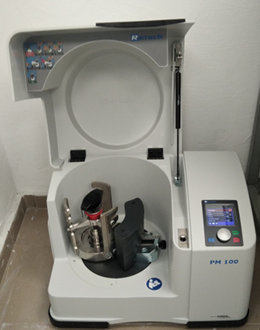
Planetary ball mill, by Retsch (PM100 model).
Equipped with a set of stainless-steel jar (25 mL capacity) and balls for mechanical alloying of various materials from the precursor compounds or chemical elements.
The type of jar and balls can also be agate, corundum, zirconium oxide or tungsten carbide, depending on the chemical reactivity and hardness of the samples. Suitable for dry and wet grinding as well as programmable, long-term use.
Laser structuring and functionalization of materials and devices – growth and processing
Laser-assisted chemical etching platform: Home-built setup for microstructuring the surface of solid-state materials, employing laser irradiation in the presence of a gas ambient. Includes vacuum chamber, gas flow system with pressure gauges, optical components, and XY computer controlled motorized translation stages for treatment of large surfaces. The pulsed Nd:YAG laser (pulse duration 4 ns) can emit at the following wavelengths: 1064 nm (fundamental), 532 nm (second harmonic frequency) and 355 nm (third harmonic frequency).
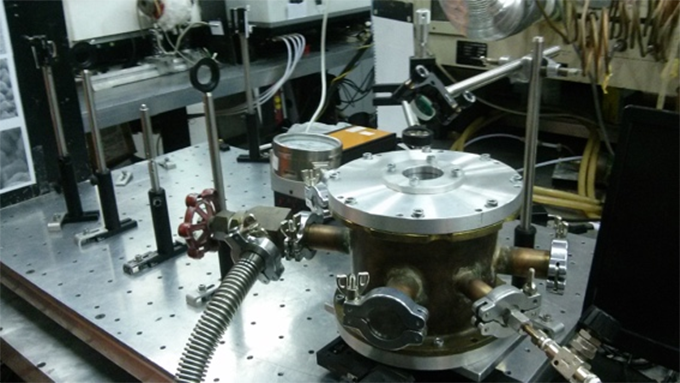
Thin film preparation by pulsed laser ablation of metallic or ceramic targets in a reactive oxygen ambient atmosphere (R-PLD, Reactive Pulsed Laser Deposition). This home-made setup includes (a) ultra-high vacuum chamber supported by a differential pumping system with vacuum gauges and (b) Nd:YAG laser operating in the infrared (1064 nm), visible (532 nm) and ultraviolet (355 nm) range.


Thin film preparation
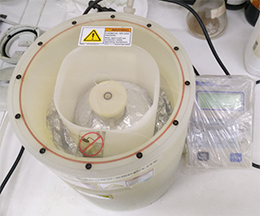
Spin coater, by Laurell Tech. Corp., WS-400BX-6NPP/LITE, with high resolution velocity determination, chamber environment as well as programmable rotation/coating protocol
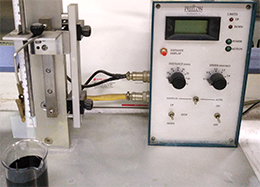
Dip coater, manufactured by a small local company.
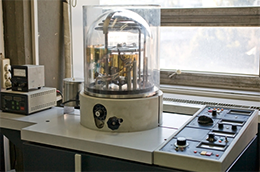
Thermal coating system, by Edwards, E306A, used for noble metal (e.g. gold) thin coating and electrode deposition.
Two Electro-thermal poling and one corona poling home-made setups for the creation of nanostructures in isotropic (e.g. glassy) materials, aiming at the development of hybrid materials with non-linear optical properties. The one shown here is the larger setup; there is another one which is more compact. The setup comprises:
- High voltage power supply, by NSE-Electronics (maximum voltage 15kV).
- Temperature resistant stainless steel tube-like cell with special electrodes and a compact box-like metal cell, for high voltage application. Both cells have controlled atmosphere capability (vacuum or constant inert gas flow).
- High temperature tubular oven, which accommodates the stainless steel tube-like cell. The box-like cell has an independent thermocouple and temperature controller.
- Rotary vacuum pump.
- The corona poling setup uses a floating voltage Pt wire.
Used for the study of thermal-electric-field-poling-induced non-linear optical properties in glassy materials. This occurs via the development of surface layers with nanostructural variations with respect to the untreated material.
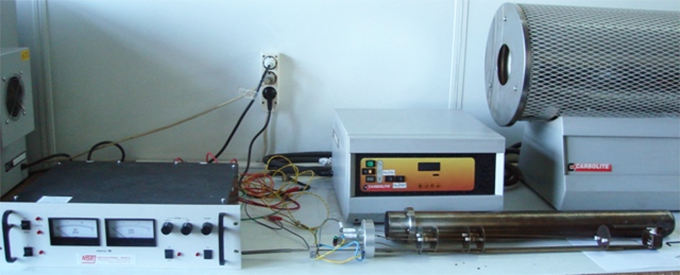
Specimen cutting and polishing
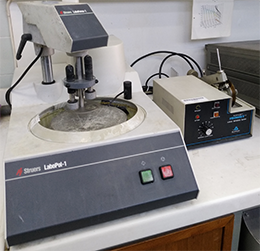
Precision optical polishing and cutting systems, by Struers, LaboPol-1 and by Buehler, Isomet, respectively, for glass and other ceramic specimen.
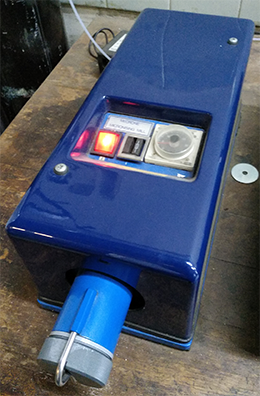
Micronising mill, by McCrone, with corundum anvils for dry or wet solids materials polishing.
